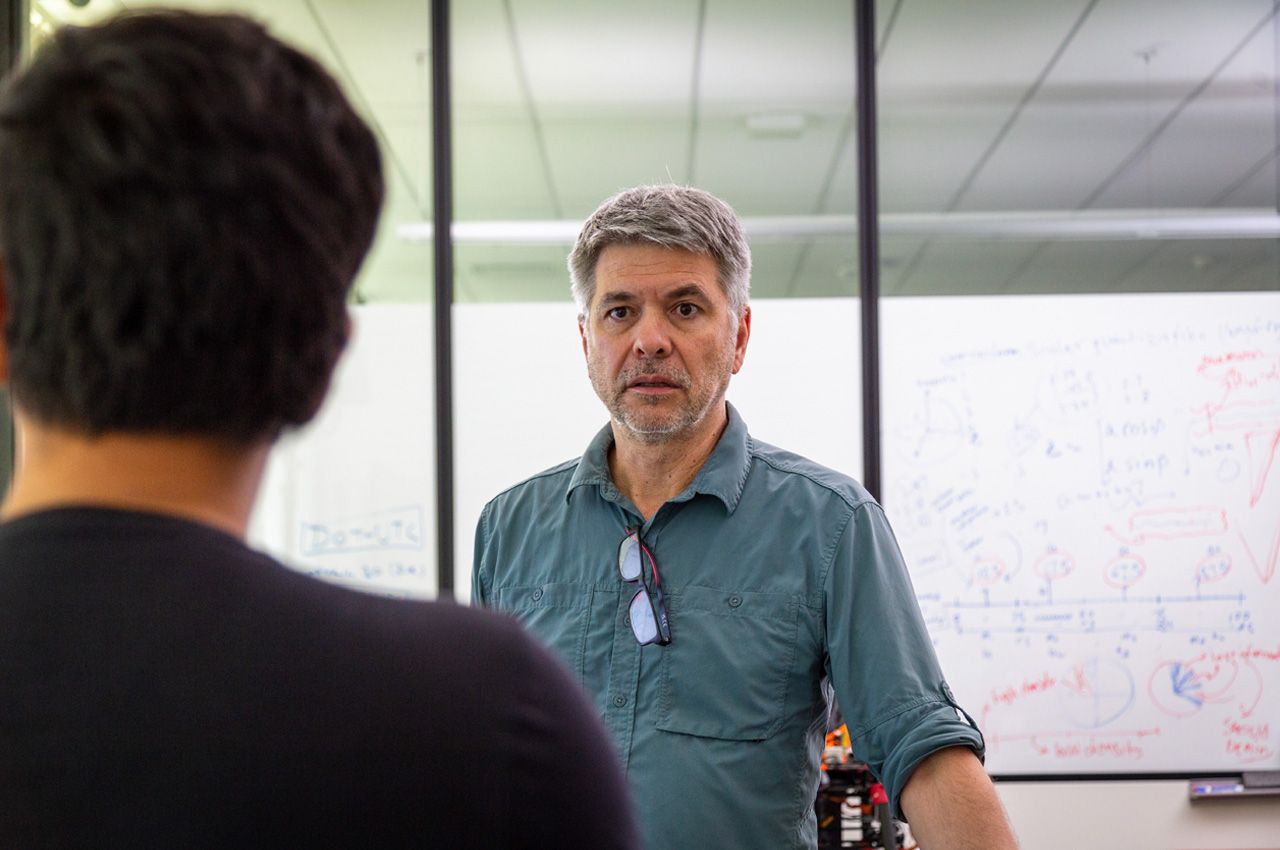$6 Million NASA Funding Toward Fully Uncrewed Aircraft Systems

Boris Pervan, Frank Gunsaulus Faculty Fellow in Mechanical and Aerospace Engineering and director of the Center for Assured and Resilient Navigation in Advanced Transportation Systems (CARNATIONS) at Illinois Institute of Technology, and Samer Khanafseh, research associate professor at Illinois Tech, are partners on a new $6 million NASA-funded project working on safe, scalable, and seamless surface navigation for uncrewed aircraft systems (UAS).
This project, funded through NASA’s University Leadership Initiative, aims to fill in gaps to get closer to UASs that can fully takeoff, land, and taxi at commercial airports.
The project has two main goals: to develop standards for what requirements UASs should be expected to meet to safely and reliably navigate in a commercial airport environment and to develop technological solutions that can meet these requirements.
Pervan and Khanafseh will focus on the technological side, working on a solution that utilizes their shared expertise in global navigation satellite systems (GNSS), such as GPS.
This project overlaps with a number of other projects that they have worked on, including advanced receiver autonomous integrity monitoring for the Federal Aviation Administration and a project developing precision landing for aircraft and drones for the United States Navy.
“It’s kind of a fusion of these two ideas that we’ve worked with before, which makes us the right people to be doing it,” says Pervan.
Some aspects of automated aircraft navigation are already fairly advanced. With current state-of-the-art technology, as long as both the aircraft and airport have the right equipment, autopilot systems for flying and landing are already widely used.
“It’s funny, you’d think that the hard parts would be the flying part and the landing part, but for UASs it’s actually the surface navigation,” says Pervan.
This comes down to taxiing requiring a much higher level of precision and the fact that there are many potential sources of interference in the airport environment, both in terms of barriers or objects that could be in the path of a moving UAS and a greater number of interference sources and blockages to the GNSS signals.
Pervan will approach this issue by using receivers that take in signals from multiple satellite constellations broadcasting at two frequencies in order to lessen the impact of measurement errors.
“With that redundancy, we think we can unlock that centimeter-level positioning,” says Pervan.
Pervan says he expects that the technology that they develop to have potential broader uses, such as simplifying autopilot landing technology for commercial aircraft.
This project is in collaboration with Ohio University, Virginia Polytechnic Institute and State University, Virginia Tech Transportation Institute, Stanford University, Tufts University, Reliable Robotics Corporation, Veth Research Associates, and the Boeing Company.
Mathieu Joerger (M.S. ME ’02, Ph.D. MAE ’09), an assistant professor at Virginia Tech, is a collaborator on the GNSS-related technological solution.


![[From left to right] Associate Professor of Biomedical Engineering Kenneth Tichauer and Professor of Electrical and Computer Engineering Jovan Brankov](/sites/default/files/styles/width_350/public/2024-11/tichauer-brankov_1280x850.jpg?itok=yH3td0MR)

